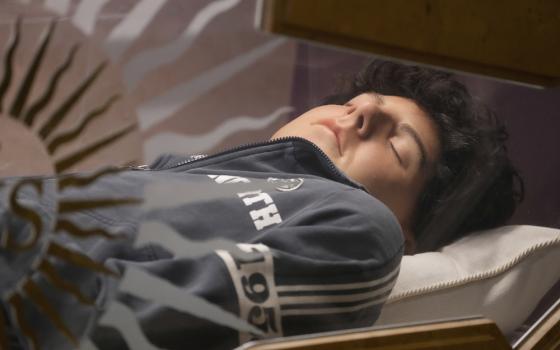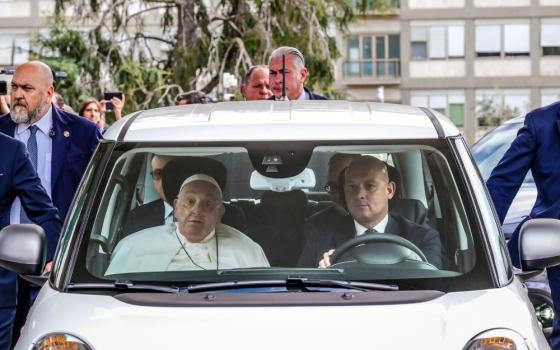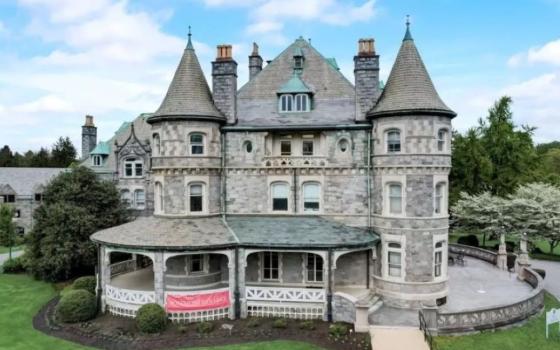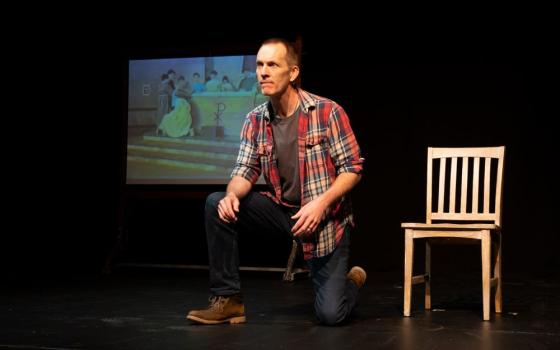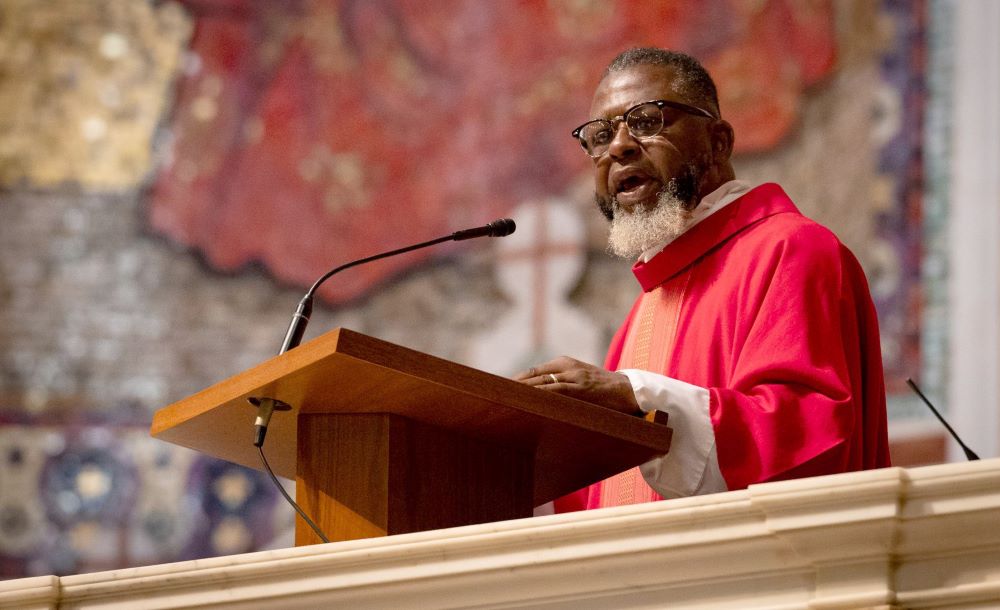
Deacon Darryl Kelley gives the homily at the 72nd annual Red Mass Oct. 6 at the Cathedral of St. Matthew the Apostle in Washington. Kelley, an attorney, serves in ministry at St. John the Evangelist Parish in Clinton, Maryland. He is the first deacon to deliver the homily at Washington's Red Mass. (OSV News/John Carroll Society/Christopher Newkumet)
The spokeswoman for the Archdiocese of Washington told me to arrive early for the Red Mass.
But, alas, I arrived a minute before 9 a.m. at the Cathedral of St. Matthew the Apostle, strode past a bevy of ushers, up the side aisle until an attendant finally gave me the ole skunk eye.
Already seated in the front pew were Chief Justice John Roberts, his wife, Jane, Justices Brett Kavanaugh and Amy Coney Barrett.
Ole skunk eye smiled wanly with a look that said, can I help you?
Ask for forgiveness, not permission. Works just as well for journalists as Catholics.
Press row?
Right here.
I stepped in. A head swiveled — Paul Schwartzman, my former colleague and longtime Washington Post reporter, one of the most gifted writers at the paper, possessing a keen eye and a lyrical writing style that enlivens the Post's local news section.
He was assigned to cover the Red Mass, a sort of unofficial spiritual prelude to the Supreme Court term, held the Sunday before the first Monday in October. Originated centuries ago in Europe, the Red Mass was inspired by the scarlet robes royal judges wore and the priest’' red vestments that symbolize Pentecost's tongues of fire.
Paul was puzzled; he did not know I'd left The Wall Street Journal. I was fulfilling my Sunday obligation — and also attending because of my new job as NCR executive editor.
Paul seems uncomfortable and unsure. He confesses with a chuckle that the assignment covering the Red Mass that morning had given him a bit of a panic attack. Journalists are competitive, but also collegial. I suggest that maybe the Holy Spirit sent me to give him a hand.
Paul turns to me and says, "Tell a nice Jewish boy from New York, who are all those guys in red vestments?" Well, they're priests, bishops and cardinals. The men with the red "yarmulkes," I added, are cardinals and bishops.
The news would come in the homily, I say, and the homilist would be, for the first time in 72 years of Red Masses, a permanent deacon — not a cardinal, archbishop, bishop or priest.
It is notable that the homilist is Deacon Darryl Kelley, a former member of the Maryland House of Delegates from Prince George's County, Maryland. A practicing lawyer, he is a deacon who serves at St. John the Evangelist Parish in Clinton, Maryland. While an inspector with the U.S. Marshal Service, Kelley went to night law school, then to work for Maryland's U.S. Sen. Paul Sarbanes, a Democrat, and served as a Democratic Maryland delegate 2003-2007.
Advertisement
But it wasn't lost on me that the Mass, celebrated by Washington Cardinal Wilton Gregory, has as its homilist a Democrat, whose job it is to preach to three of the most powerful Republican-appointed judges in America. Yes, a Democrat, albeit one unafraid to go against his party on a matter of Catholic principle.
Civility, humility and fortitude are Kelley's themes of the homily, and coming at a time that has become remarkably, historically and particularly uncivil at the high court.
Here it is worth noting that two of the justices most vociferously at odds, bordering on uncivil — Samuel Alito and Sonya Sotamayor, both Catholics — are no-shows at the Red Mass.
Kelley's homily comes in the wake of often bumptious decisions by the conservative supermajority and scathing dissents from the liberal minority amidst withering disagreements. In addition to rancor, the Supremes also have been beset in recent years by low poll ratings, ethical scandals and unprecedented leaks clearly meant as political attacks between justices.
"We must be agents and witnesses of civility, reconciliation and fraternity, e pluribus unum," Deacon Kelley says. "As lawyers, we are servants not only of clients or courts, but of the whole of society. This is a necessary task if we are to have a good and just society, but our own efforts cannot fully accomplish it."
Kelley concludes by asking the Holy Spirit to "give us the inspirational strength to be faithful to do the right thing, always."
Do the right thing. Maybe I'm reading too much into it, but I spy a Spike Lee line, right in Washington's Roman Catholic cathedral.
A bit more politics for Paul, I point out the etching in the marble floor at the feet of the chief justice. It says: "Here rested the remains of President Kennedy at the Requiem Mass, Nov. 25, 1963." It was an assassination in the 1960s, another era of division and rancor.
Paul's piece is a typically masterful event coverage.
After the cardinal warmly greets the justices, they all depart to "America the Beautiful" and "O Spirit, All Embracing." Paul asks if he could take a look at the marble engraving. Of course. Check it out, good to see you and we bid farewell. Paul includes the JFK inscription in his piece.
On Rhode Island Avenue after Mass, I shake hands with Deacon Kelley, and compliment him on his focus on humility and fortitude. I say, personally, I think humility is in much more desperate need at the court. Kelley laughs heartily.

